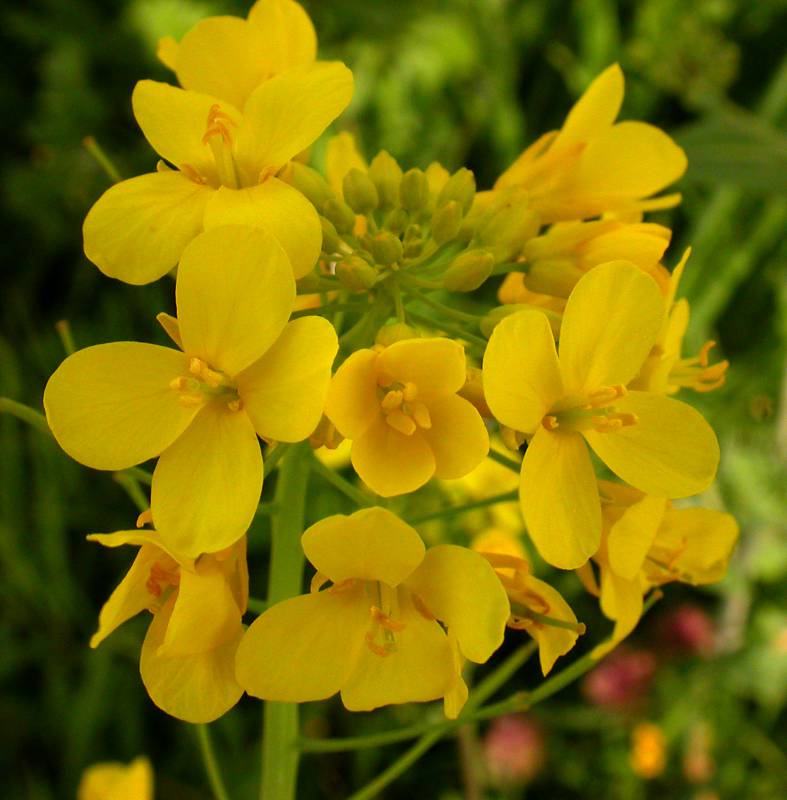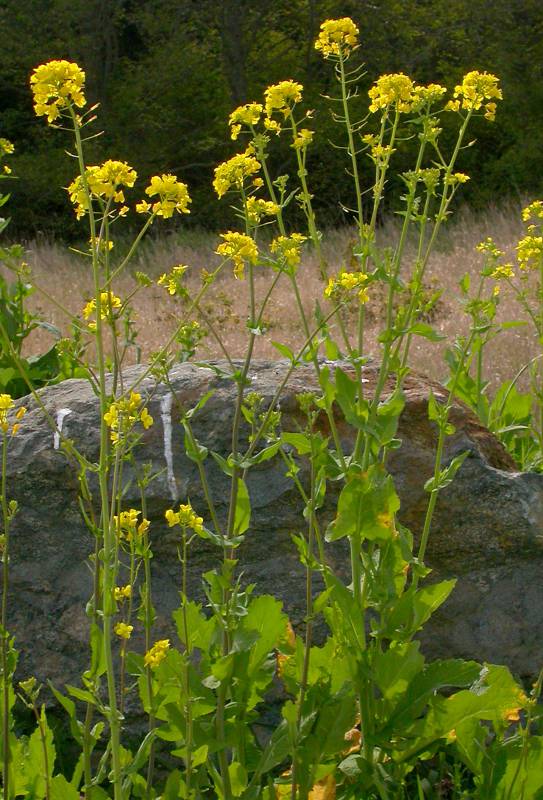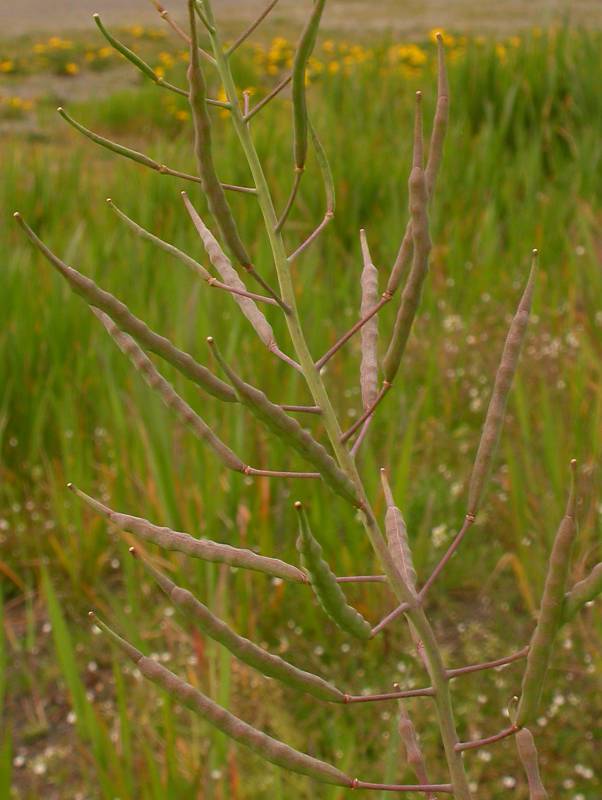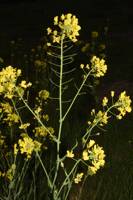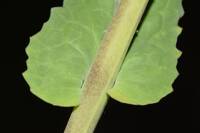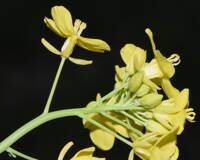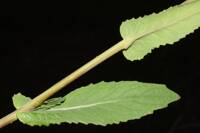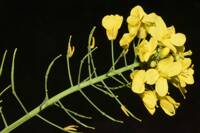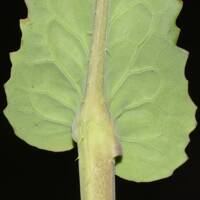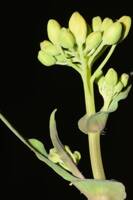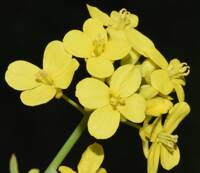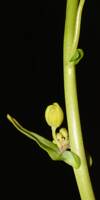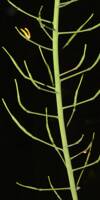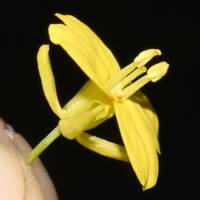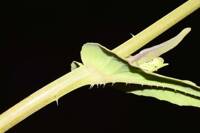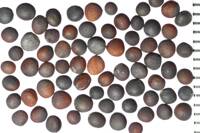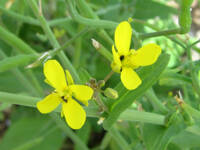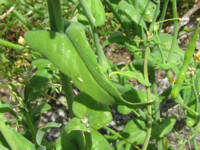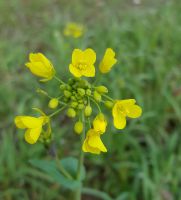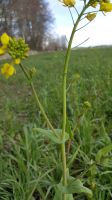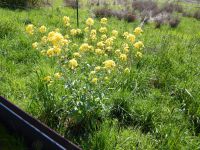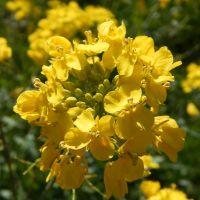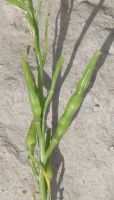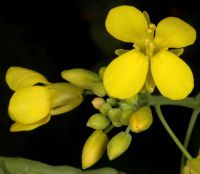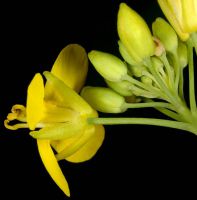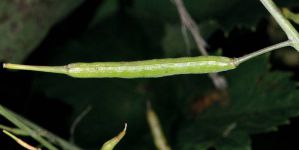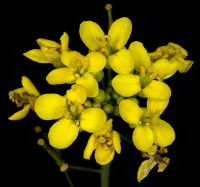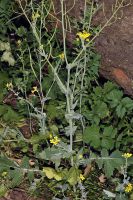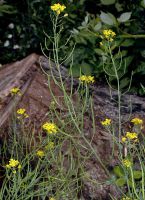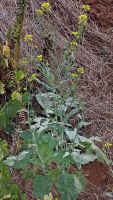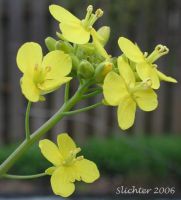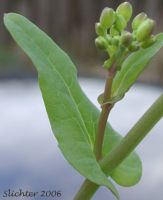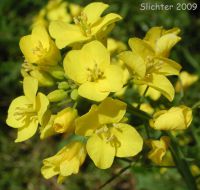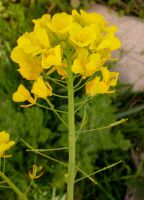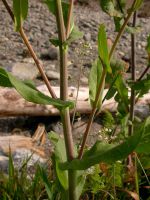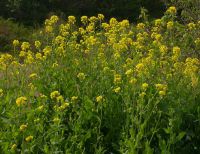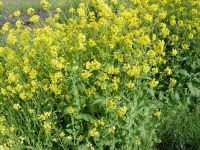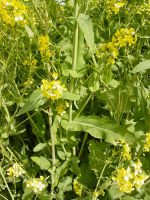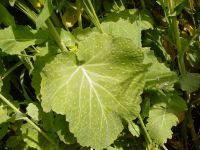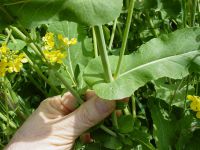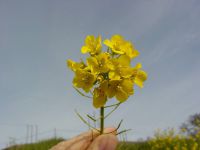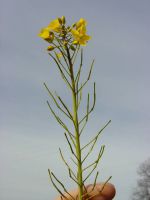Distribution: Occurring chiefly west of the Cascades crest in Washington; Alaska to California, east to the Atlantic Coast.
Habitat: Roadsides, fields, ditches, wastelots and other disturbed open areas.
Flowers: April-Septemeber
Origin: Introduced from Europe
Growth Duration: Annual, Biennial
Conservation Status: Not of concern
Pollination: Bees, flies, butterflies
Annual or biennial herb, glabrous or sparsely hairy with fleshy or slender roots.
Alternately arranged basal or cauline leaves. Basal leaves petiole 2-10 cm long, blade is lyrate-pinnatifid to pinnate to pinnatisect, 10-40 cm; margins sinuate with 2-4 lateral lobes. Cauline leaves sessile with the base auriculate to amplexicaul in shape.
Flowers in small racemes terminally from leaf axils, with fruiting pedicels ascending to spreading, 10-25 mm. Sepals 4, green to yellow; petals 4, pale to deep yellow, 1 cm long; 6 stamens, 2 shorter than the others; superior ovary with one 2-carpellate pistil.
Siliques up to 7cm long with s slender beaked tip.
Black, brown or reddish in color, 1-2 mm in diameter. Seed coat is very finely reticulate to lightly alveolate.
Publication: Sp. Pl. 2: 666. 1753.
Brassica rapa L. ssp. campestris (L.) Clapham [Stace 1997]
Brassica rapa L. var. rapa [KZ99]
PNW Herbaria: Specimen records of Brassica rapa in the Consortium of Pacific Northwest Herbaria database
WA Flora Checklist: Brassica rapa checklist entry
OregonFlora: Brassica rapa information
E-Flora BC: Brassica rapa atlas page
CalPhotos: Brassica rapa photos

